
 |
 |
||||||||
|
|
Lessons Menu - Lesson 9 - Lesson 10 - Lesson 11 - Lesson 12 - Lesson 13 - Lesson 14 - Lesson 15 - Lesson 16 |
| Lesson Plan 9 - Agriculture INTRODUCING THE COLLECTION (AGRICULTURE) |
download
lesson09.pdf |
|
| OVERVIEW STUDENT OBJECTIVES CALIFORNIA HISTORY STANDARDS
BACKGROUND ARTICLE 9
STUDENT ACTIVITY SHEET 9 AND KEY |
ADDITIONAL ITEMS AVAILABLE IN THIS LESSON PLAN: |
|
DOCUMENTS TO DISCUSS
(view online or print screen) |
||||
| Photographs | ||||
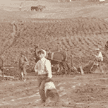 view large image |
1. Working the land [ca. 1900] Men and horses posing in front of row crops planted in a field next to a river. Wiseman family ranch. |
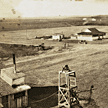 view large image |
2. Kuhn California
Project [1912] Panoramic photo showing views of farms served by Kuhn irrigation project. |
|
| Ephemera | ||||
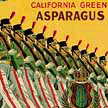 view large image |
3. King's Cadets label [ca.1925] Vegetable crate label for the King's Cadets brand asparagus. Label depicts marching soldiers dressed in green parade uniforms. They are symbolic representations of stalks of asparagus. |
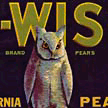 view large image |
4. B-Wise Pears label [ca.1925] Fruit crate label featuring an owl. |
|
| Postcards | ||||
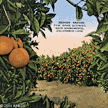 view large image |
5. Orange grove [ca. 1910] Postcard showing orange grove at Fair Oaks. |
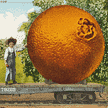 view large image |
6. Carload of
Mammoth Navel Oranges [1909] Exaggerated or tall-tale postcard by Edward H. Mitchell. |
|
|
INSTRUCTIONS 2. Read Background Article 9. You may wish to read it to your students or have them read it by themselves. Discuss any questions that they may have. 3. Introduce students to the SHO Collection by using printouts of the documents above or by showing them several records from the online database. 4. Ask students to look at some of the different documents (printed or online). Can they tell how the items are related? (subject, age, etc.) 5. Tell the students that the Sacramento History Online website has documents related to the history of agriculture in California from 1849-1929. Many of these materials are primary sources. Materials include books, ephemera, maps, manuscripts, photographs, postcards, prints, and technical drawings. 6. If students are not already familiar with the term primary sources (introduced in Lesson 1), discuss how primary sources differ from textbooks and modern books written about a historical time period. 7. If students are not already familiar with various types of documents (introduced in Lesson 1), discuss each type and ask students to give examples of each. (books, ephemera, manuscripts, maps, photographs, postcards, prints, and technical drawings) 8. If students are not already familiar with the term ephemera (introduced in Lesson 1), ask what they think the word ephemera might mean. Do they know any other words that sound similar? The word ephemera relates to objects that are ephemeral. The term ephemeral means something that lasts only a short time (originally it meant lasting only a day). Once students understand the concept, ask if any of them have items in their family that came from another time period, something not necessarily intended to have lasting value. (e.g. an event ticket, a food wrapper) Do any of them have a scrapbook? What kinds of things do they save? What is often thrown away? 9. Photographs: Panoramic photos. Show and discuss Document 1, Working the land. Ask students what they think the photograph shows. (a farm, horses, dog) How old do they think the image is? Why do they think so? What kind of farm equipment is shown? (apparently plows for cultivating) How does it look different from modern equipment? (horse-drawn) Show students Document 2, Kuhn California Project. Beginning in 1908, J.S. and W.S. Kuhn of Pittsburgh, Pennsylvania, purchased and then completed the Central Canal project. The irrigation project served farmland in Colusa and Glenn Counties. How does this photograph differ from the first? (shape, size) Explain that this image is an example of a panoramic photo, a format that was popular during the early part of the twentieth century. For what types of subjects would this type of photo be useful? 10. Ephemera: Fruit labels. Show and discuss Document 3, King Cadets label. Ask students how they think this label was used. (asparagus crate) Why does it have this shape? (packed in a box that was narrower at the top, matching the shape of asparagus spears standing on end) Show and discuss Document 4, B-Wise pear label. Ask students how this label was used. (pear crate) Why does the label says B-Wise? (suggests that you might be wise if you buy that brand) What other food brands do they know that use a name to suggest that the product is high-quality or the buyer is smart to buy the product? 11. Postcards. Show and discuss Document 5, Orange grove. What kind of document is this image? (postcard) Show and discuss Document 6, Carload of Mammoth Navel Oranges. Compare the two postcards. Is there anything odd or funny about the second postcard? Which card gives a more accurate view of how oranges grow? Why did people make exaggerated postcards? What other types of transportation could be shown on an exaggerated postcard? (answers might include airplane, ship, truck, crane) 12. Give students Activity Sheet 9: Introducing the Sacramento History Online Collection (Agriculture) (printed from the PDF file). After they have finished the activity, discuss their answers as a group. FOLLOW-UP 2. Compare labels from modern canned and packaged goods to fruit crate labels. Make your own crate label for a crop that was grown in your area or for a modern product. 3. Make a list of materials representing aspects of agriculture that would tell someone in the future about life in the 21st century in your community. What things should be shown in photographs in order for them to be included? What maps should be included? What ephemera? 4. Collect other examples of exaggerated postcards. If your community is famous for growing a certain crop or manufacturing a product, make your own exaggerated postcard. REFERENCES AND RESOURCES Edinger, Monica. Seeking history, teaching
with primary sources in grades 4-6.
Rubin, Cynthia E. and Williams, Morgan. Larger than
life: The American Tall-Tale Postcard, 1905-1915. RELATED LINKS
Taking the Long View: Panoramic Photographs, 1851-1991 Panorama-rama! A Short History of Panoramic Photography Fruit Crate Labels of the Golden State A History of California Citrus Crate Labels History of Sunkist's Crate Labels
California Historical Society | Exhibits | Past Exhibits
Packing Labels: A Unique Look into California History
Fantasy Photographs by W. H. Martin -- American Museum of Photography The Golden Age of Picture Postcards |
| Sacramento History Online © 2003 - 2004 | |